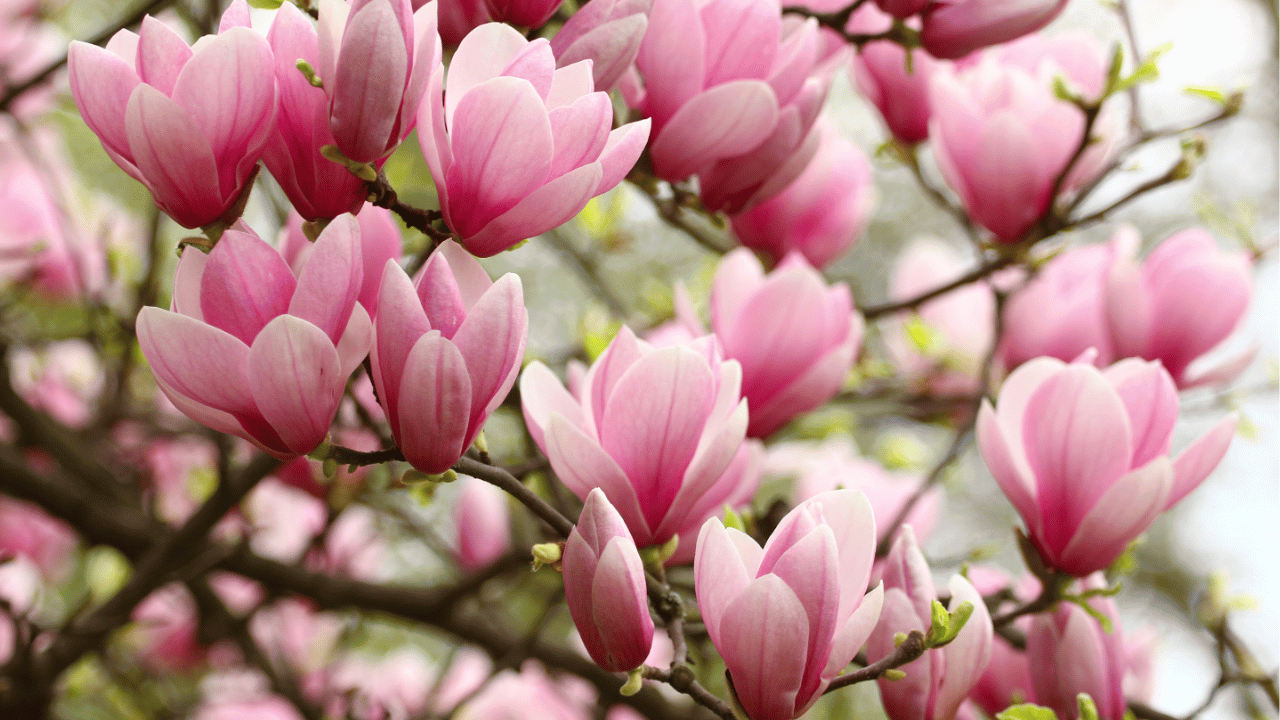Magnolia trees, with their stunning blooms and majestic stature, can transform any garden into a serene haven. However, these beautiful trees require specific care to ensure they thrive year after year. With a little attention and knowledge, gardeners can nurture their magnolias to flourish. Here are ten detailed tips to help you maintain your magnolia tree’s health and beauty, making it a showpiece in your landscape.
1. Choose the Right Location
Magnolias prefer a location that provides full to partial sunlight. The tree needs plenty of room to grow, so ensure it has enough space for its wide canopy to expand. A well-drained soil is crucial, as magnolia roots dislike sitting in waterlogged areas.
When planting, avoid areas with high winds, as they can damage the tree’s delicate branches and flowers. Also, keep the tree away from concrete surfaces, like sidewalks, as its shallow roots can interfere with them as the tree grows.
2. Water Deeply but Infrequently
Magnolias need consistent moisture but dislike soggy soil. Water deeply, soaking the ground at the base, so that the roots receive water down to their full depth. However, allow the soil to dry out slightly between watering sessions.
Avoid frequent, shallow watering, as this encourages weak, surface-level roots. Instead, deep watering helps magnolias develop strong, healthy root systems that can support the tree’s growth and bloom production.
3. Mulch to Retain Moisture
Applying a layer of mulch around your magnolia is essential to help retain soil moisture and regulate temperature. Use organic mulch, such as wood chips or bark, and apply it about 3 to 4 inches thick around the base of the tree.
Be careful not to pile the mulch too close to the trunk, as this can lead to rot and attract pests. Spread the mulch outward to the tree’s drip line, which will help to nourish the root zone effectively.
4. Prune Sparingly and Carefully
Magnolias generally don’t need heavy pruning, but occasional trimming can help maintain their shape and remove dead or damaged branches. It’s best to prune right after the flowering season to avoid removing buds that will bloom the following year.
Use sharp, clean tools, and make sure to cut at a slight angle to promote proper healing. Avoid over-pruning, as magnolias can be slow to recover and may not respond well to drastic cuts.
5. Protect Roots from Compaction
Magnolias have shallow roots, which are easily damaged by soil compaction. Avoid planting grass or heavy plants under the tree, as their roots will compete with the magnolia’s for water and nutrients.
If possible, create a dedicated garden bed under the tree’s canopy to discourage foot traffic. Keep lawn equipment and heavy objects away from the tree’s root zone to prevent damage that could slow the tree’s growth.
6. Fertilize Judiciously
Magnolias benefit from fertilization, but too much can cause rapid, weak growth. In early spring, apply a balanced, slow-release fertilizer to help the tree develop strong branches and support its blooming cycle.
It’s important to follow the manufacturer’s directions carefully, as over-fertilizing can lead to nutrient imbalances and stress the tree. Always check the soil’s nutrient levels before adding additional fertilizer, especially if the tree shows signs of stress.
7. Control Pests and Diseases
Although magnolias are relatively resistant to pests, they can occasionally attract scale insects, aphids, or other pests. Regularly inspect the leaves, branches, and bark for signs of infestation. If pests are found, use an insecticidal soap or horticultural oil to treat the affected areas.
Diseases such as leaf spots or cankers can also affect magnolias. Proper pruning, adequate air circulation, and avoiding over-watering can help prevent these problems. If you notice disease, remove and dispose of affected branches immediately.
8. Maintain Proper Air Circulation
Crowding magnolia trees or allowing dense undergrowth to flourish can limit airflow, leading to fungal issues. Ensure that the magnolia has plenty of space around it, both above and below, to promote healthy air circulation.
You can achieve this by thinning out surrounding plants and removing low-hanging branches. Proper airflow reduces the risk of diseases like mildew and ensures that your tree stays healthy and vibrant throughout the growing season.
9. Be Patient with Transplants
Magnolias can be finicky when transplanted, so patience is key. If you must move your tree, try to do so in early spring or late fall, when the weather is mild and the tree is dormant.
Prepare the new planting site thoroughly by digging a hole twice as wide and just as deep as the root ball. After transplanting, water generously and keep the soil moist until the tree becomes established. Be prepared for a slower recovery period, as magnolias can take time to adapt to new environments.
10. Monitor for Frost Damage
Magnolias, particularly their flowers, are sensitive to late frosts. If frost is predicted in your area, cover the tree with a frost cloth or blanket to protect the delicate blooms. Avoid using plastic, as it can trap moisture and cause freezing damage.
If frost does damage your magnolia, prune back any affected branches in the spring to encourage new growth. Although it can be disappointing to lose early blooms, the tree will recover and produce more flowers in subsequent seasons.

